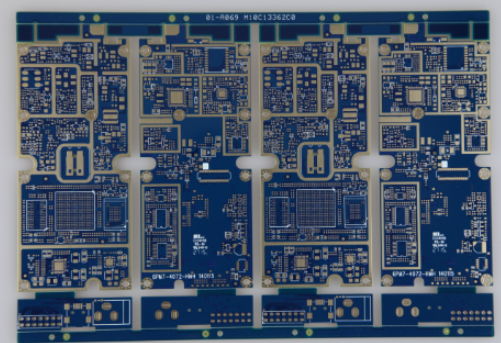Nowadays, the intelligentization of mobile phones and automobiles and the rapid expansion of market capacity have driven the rapid development of the upstream PCB industry. In the process of PCB manufacturers entering automation and smart factory upgrading and transformation, Power Feiyang and other front-end technologies that are deeply rooted in the automation of the PCB industry And the provider of the program played an important role. Especially recently, the three-axis robot launched by Power Feiyang has set off a new revolution in the PCB automation industry with obvious advantages.
PCB industry ushered in a new stage of development

It is observed that the PCB industry is currently entering a new stage of development, and many manufacturers in the industry have deeply felt the changes that are different from the past.
First of all, the demand for PCB products has increased significantly, allowing PCB manufacturers to see many business opportunities and greater prospects. At present, the increasing popularity of smart phones and smart TVs, the gradual maturity of intelligent transportation applications in the automotive field, and the entry of 5G technology into the market have caused many industry companies to have a huge demand for PCB products. Moreover, the differentiation of different industries also puts forward different requirements for PCB specific products.
Secondly, the PCB industry itself is constantly progressing and developing. In order to adapt to new requirements, the PCB industry has also grown in recent years, with PCB products showing the characteristics of multi-layer, ultra-thin, miniaturization, high precision, and so on. PCB manufacturers seized the development trend of Industry 4.0, through technological upgrading, actively introduced robotic equipment, promoted automation transformation, and strived to build a new generation of smart factories, achieving new goals such as efficiency, accuracy, and environmental protection.
Thirdly, judging from the current development trend of the PCB industry, the global layout of PCB product manufacturing is being redefined. China has become an important town in the PCB industry, with output accounting for half of the world. In the face of such development opportunities, if Chinese PCB manufacturers seize the opportunity, use the technological revolution, and through robotic equipment, they will have the ability and possibility to overtake their global counterparts and become a new leader in the development of Industry 4.0.
What era has the PCB automation industry entered?
How many axis robots are more suitable for the current PCB industry?
As mentioned above, there are many opportunities in the PCB industry, and there are many technologies and equipment that can be used. But at present, there is a core equipment in the industry, and everyone still has different arguments, and they are still entangled and hesitated. That is, does the robot use six-axis, four-axis, or three-axis? This specific problem needs to be analyzed according to different manufacturers and different needs, and cannot be a one-size-fits-all solution. Some experts pointed out that comprehensive consideration is needed before making a choice.
In most people's opinion, especially when customers come to visit the factory and need to "show" the company's strength, they feel that the more the number of axes, the more advanced, and the larger the robot equipment, the more powerful it is. This was the case when robotic equipment appeared in the early days. But this understanding is one-sided. In the past, six-axis and four-axis equipment were generally provided by foreign manufacturers. In order to ensure their own sufficient profits, foreign manufacturers used technical blockades to purchase robotic equipment and expensive later maintenance services. In addition, multi-axis robots are complex to operate, and require high technical requirements for factory operators. Six-axis and four-axis are suitable for PCB manufacturers with relatively stable orders, but they are not flexible enough to meet the production needs of current manufacturers' diversified products.
The rapid development of 5G, smart driving, smart terminals and other industries is an excellent opportunity for the PCB industry and manufacturers to achieve greater development, and it is also a huge challenge for how to successfully achieve automation upgrades.
On the one hand, the PCB industry and manufacturers must fully realize the urgency of smart upgrades, and put automation and smart factories on the important agenda of enterprise development. On the other hand, we must also learn to settle accounts based on the actual situation, and rationally adopt appropriate three-axis robot technology and equipment based on the actual situation of the enterprise itself.